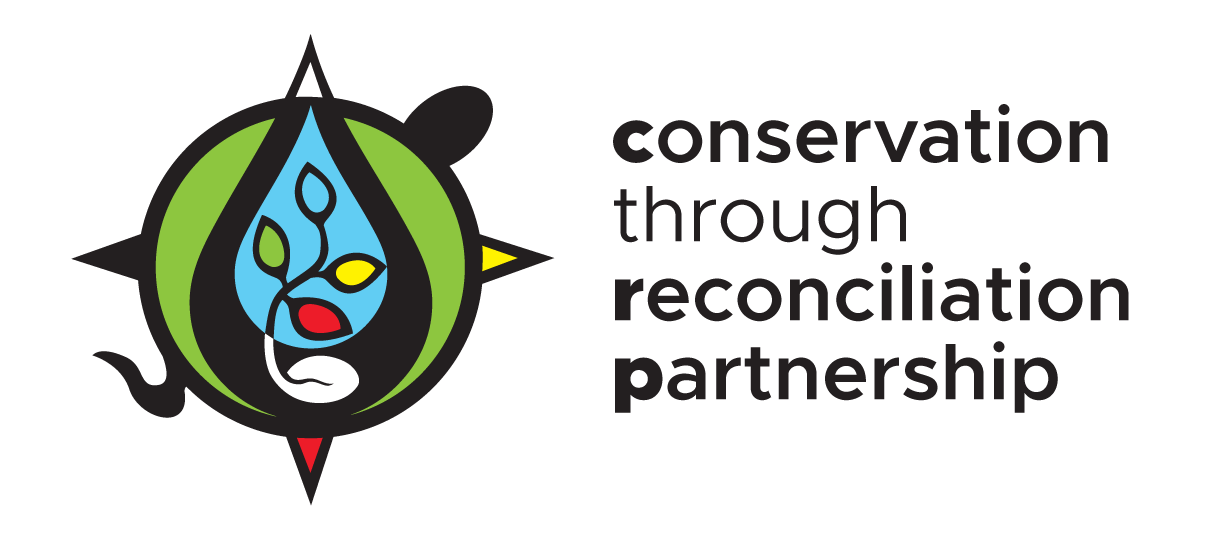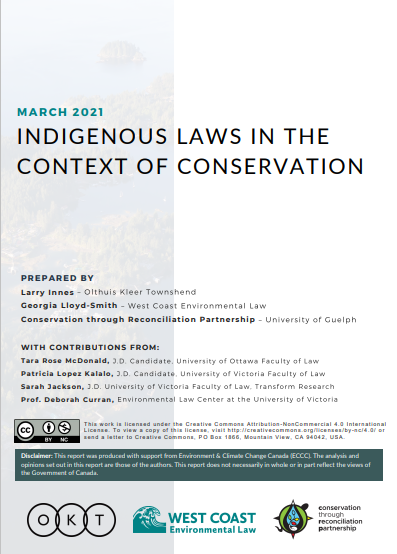Report: Indigenous Laws in the Context of Conservation
Prepared by: Larry Innes (Olthius Kleer Townshend), Georgia Lloyd-Smith (West Coast Environmental Law), Conservation through Reconciliation Partnership (University of Guelph).
With Contributions From: Tara Rose McDonald, J.D. Candidate (University of Ottawa Faculty of Law), Patricia Lopez Kalalo, J.D. Candidate (University of Victoria Faculty of Law),Sarah Jackson, J.D. (University of Victoria Faculty of Law, Transform Research),Professor Deborah Curran(Environmental Law Centre at the University of Victoria).
Positionality Statement: Environment and Climate Change Canada (ECCC) supported the curation of this report in partnership with the authors and the Conservation through Reconciliation Partnership (CRP) in the spirit of collaboration. This collaborative effort demonstrates the CRP’s approach to research and knowledge-sharing to learn from, inform, support and advance Indigenous-led conservation. ECCC feels it is important to support this kind of research. The analysis and opinions set out in the report are those of the authors and do not necessarily reflect the views of the Government of Canada.
Description: To successfully build Nation-to-Nation and Crown-to-Inuit relationships that recognize and reconcile Crown and Indigenous jurisdictions and authorities, Indigenous Protected and Conserved Areas (IPCAs) governance arrangements must find ways to bring together Indigenous and Crown legal systems. This report examines SGaan Kinghlas-Bowie Seamount Marine Protected Area in Haida Gwaii and Thaidene Nëné in Łutsël K’é Dene First Nation territory as two contemporary examples of how Indigenous laws operate alongside Crown laws within IPCAs.
The report makes recommendations for how mutual recognition of Indigenous and Crown jurisdictions throughout the establishment, management and operation of IPCAs can advance effective conservation and provide a pathway for reconciliation. The report finds that IPCAs offer clear and compelling benefits for both Indigenous and Crown governments that go well beyond conservation. As the case studies demonstrate, the integration of Indigenous law and shared decision-making within IPCAs substantially reduces conflicts and fosters relationships that advance mutual learning and more effective decision-making in the face of present and future challenges.


